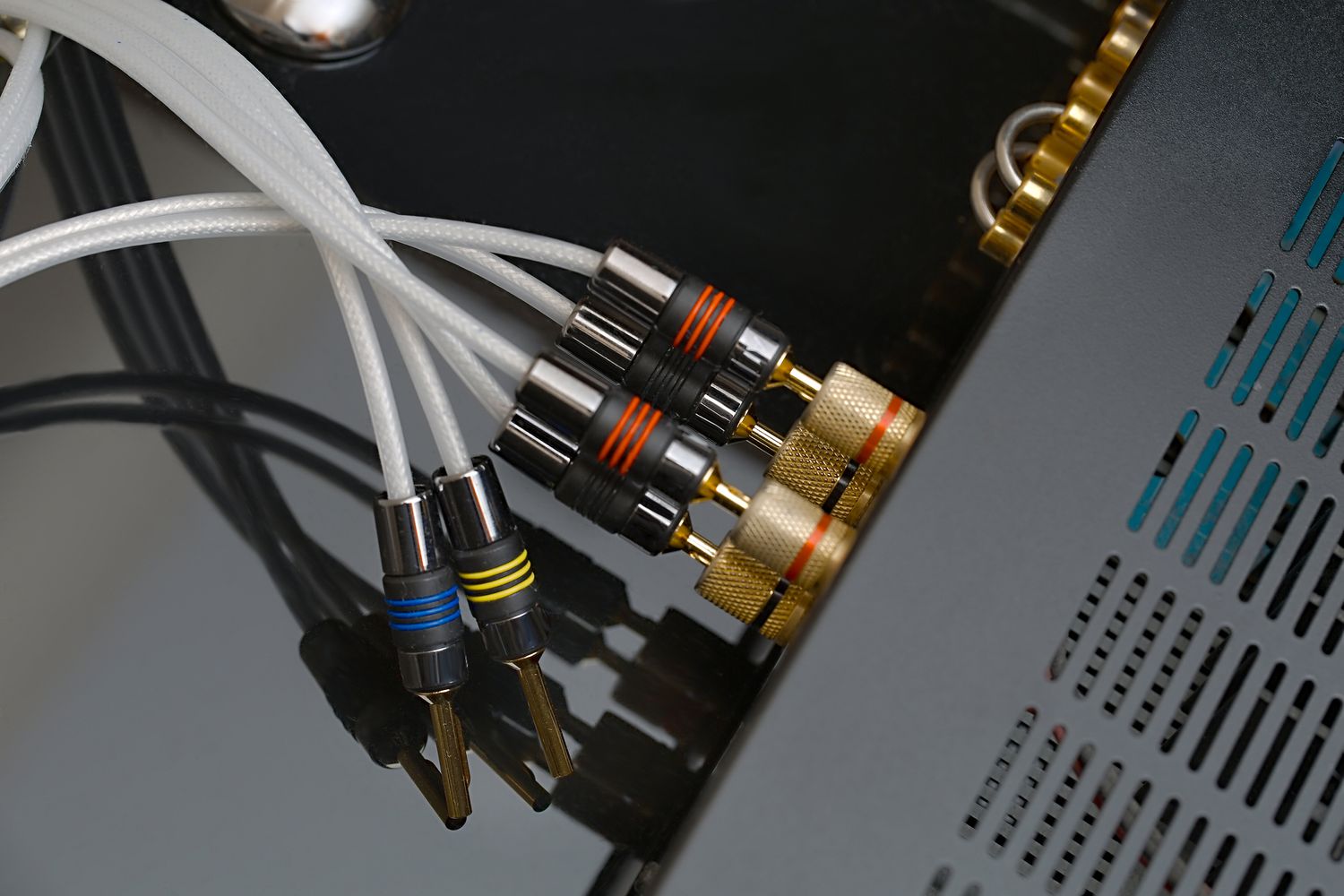Home>Production & Technology>Audio Cable>How To Set Up A Virtual Audio Cable Windows 10


Audio Cable
How To Set Up A Virtual Audio Cable Windows 10
Modified: January 22, 2024
Learn how to set up a virtual audio cable on Windows 10 and enjoy seamless audio transmission. Enhance your audio experience with this step-by-step guide.
(Many of the links in this article redirect to a specific reviewed product. Your purchase of these products through affiliate links helps to generate commission for AudioLover.com, at no extra cost. Learn more)
Table of Contents
- Introduction
- What is a Virtual Audio Cable?
- Benefits of Using a Virtual Audio Cable
- Step 1: Downloading and Installing Virtual Audio Cable
- Step 2: Configuring Virtual Audio Cable Settings
- Step 3: Setting Up Virtual Audio Cable as a Playback Device
- Step 4: Setting Up Virtual Audio Cable as a Recording Device
- Step 5: Adjusting Audio Settings in Windows 10
- Troubleshooting Tips
- Conclusion
Introduction
Welcome to the world of virtual audio cables! If you’re a music enthusiast, podcaster, or gamer, you’ve probably come across the term “virtual audio cable” in your quest for the perfect audio setup. But what exactly is a virtual audio cable? How does it work, and how can it benefit you?
In simple terms, a virtual audio cable is a software application that allows you to route audio signals between different programs and devices on your computer. It acts as a virtual conduit, enabling you to send audio from one application to another or from one device to another, just like physical audio cables would.
The beauty of virtual audio cables is that they offer incredible flexibility and convenience. They eliminate the need for physical cables and audio interfaces, making it easier than ever to manage and control your audio setup. Whether you want to record music, livestream gaming sessions with crisp audio, or create a professional podcast, a virtual audio cable can be a game-changer.
In this article, we’ll guide you through the process of setting up a virtual audio cable in Windows 10. We’ll cover everything from downloading and installing the software to configuring the settings and adjusting audio preferences. So, let’s dive in and explore the world of virtual audio cables!
What is a Virtual Audio Cable?
Before we delve into the technicalities of setting up a virtual audio cable, let’s first understand what it actually is. As mentioned earlier, a virtual audio cable is a software application that allows you to route audio signals between different programs and devices on your computer.
Think of it as a virtual version of the physical audio cables that you might use to connect your headphones, microphone, or speakers to your computer. Instead of physically plugging in cables, a virtual audio cable creates a virtual connection within your computer’s software, allowing audio to be sent and received digitally.
Here’s how it works: When you install a virtual audio cable, it creates a pair of virtual audio devices – one for playback and one for recording. These devices act as endpoints for audio signals. You can then use these virtual devices to connect different applications, allowing them to send and receive audio through the virtual cable.
For example, let’s say you’re using a software-based music production program to create a song. With a virtual audio cable, you can route the output of that program directly into another application, such as a digital audio workstation or streaming software, without any loss of quality or need for additional physical connections.
Furthermore, virtual audio cables typically offer several customization options, allowing you to adjust audio settings like sample rate, buffer size, and channel configuration. This level of control gives you the flexibility to tailor your audio setup according to your specific needs and preferences.
Overall, a virtual audio cable empowers you to seamlessly connect and manage audio signals within your computer, opening up a world of possibilities for music production, streaming, content creation, and more.
Benefits of Using a Virtual Audio Cable
Now that we have a basic understanding of what a virtual audio cable is, let’s explore some of the key benefits it offers. Whether you’re a musician, podcaster, gamer, or content creator, incorporating a virtual audio cable into your setup can bring numerous advantages. Here are a few notable benefits:
1. Flexibility and Versatility: Virtual audio cables allow you to route audio signals between different applications and devices on your computer. This flexibility enables you to seamlessly connect multiple software programs, enhancing your workflow and making it easier to manage your audio setup.
2. Elimination of Physical Cables: With virtual audio cables, you can say goodbye to the clutter of physical cables. No more tangling wires or limited connection options. Instead, you can create virtual connections within your computer, saving space and simplifying your audio setup.
3. High-Quality Audio Transmission: Virtual audio cables transmit audio digitally, ensuring optimal sound quality without any loss or degradation. This is particularly essential for musicians, podcasters, and streamers who require crystal-clear audio for their productions.
4. Real-Time Audio Monitoring: With virtual audio cables, you can monitor your audio in real time while it’s being processed or recorded. This feature is especially useful for musicians who want to monitor their instrument’s sound or for podcasters who need to hear their own voices while recording.
5. Increased Control and Customization: Virtual audio cables provide extensive control over audio settings such as sample rate, buffer size, and channel configuration. This level of customization allows you to tailor the audio setup to meet your specific requirements and achieve optimal performance.
6. Enhanced Streaming Experience: Gamers and streamers can greatly benefit from virtual audio cables. By capturing game audio and microphone input separately, you can have more control over audio levels and easily achieve professional-quality streams.
7. Integration with Third-Party Software: Many virtual audio cable applications seamlessly integrate with popular software programs such as music production software, digital audio workstations, streaming platforms, and VoIP applications, allowing for a smooth and streamlined experience.
With these benefits in mind, it’s clear that virtual audio cables offer a wide range of advantages for audio enthusiasts and professionals. Whether you’re seeking a flexible audio setup, improved sound quality, or enhanced control over your audio, incorporating a virtual audio cable into your system can be a game-changer.
Step 1: Downloading and Installing Virtual Audio Cable
Now that you understand the benefits of using a virtual audio cable, let’s dive into the process of setting one up. In this step-by-step guide, we’ll walk you through downloading and installing a virtual audio cable on your Windows 10 computer.
1. Research and choose a virtual audio cable software: There are several virtual audio cable software options available, both free and paid. Do some research to find the one that best fits your needs. Some popular choices include Virtual Audio Cable, Voicemeeter, and VB-Audio Cable.
2. Visit the software’s official website: Once you’ve decided on the virtual audio cable software you wish to use, visit the official website or trusted source to download the installer. Be cautious of downloading from unknown or unreliable sources to ensure the safety of your computer.
3. Download the installation file: Look for the download link on the website and click on it to start the download. Choose the appropriate version based on your operating system (Windows 10).
4. Run the installer: Once the download is complete, locate the installation file in your downloads folder or designated location. Double-click on the file to run the installer.
5. Follow the on-screen instructions: The installation process will vary depending on the software you’re using. Follow the on-screen instructions provided by the installer to proceed with the installation. Make sure to read any prompts or agreements carefully before accepting them.
6. Choose installation options: During the installation, you may be prompted to select certain options or components to install. Review the options and choose the ones that align with your requirements. It’s generally recommended to leave the default settings unless you have specific preferences.
7. Complete the installation process: Once you’ve chosen the installation options, click on the “Install” or “Finish” button to begin the installation. The process may take a few moments to complete depending on your computer’s speed.
8. Confirm installation: After the installation is finished, you may receive a confirmation message. Take note of any additional instructions provided, such as restarting your computer for the changes to take effect.
Congratulations! You’ve successfully downloaded and installed a virtual audio cable on your Windows 10 computer. In the next steps, we’ll guide you through the process of configuring the virtual audio cable and setting it up as a playback and recording device.
Step 2: Configuring Virtual Audio Cable Settings
Now that you have installed a virtual audio cable on your Windows 10 computer, it’s time to configure its settings to ensure optimal performance. Configuring these settings will allow you to customize the virtual audio cable according to your specific needs and preferences. Follow these steps to configure the settings:
1. Open the virtual audio cable application: Locate the installed application in your Start menu or desktop and open it by double-clicking on its icon.
2. Access the settings: Look for a “Settings” or “Options” menu within the application’s interface. Click on it to access the configuration settings.
3. Adjust the audio buffer size: The buffer size determines the amount of audio data that is temporarily stored before it is played or recorded. A larger buffer size can help prevent audio glitches or latency issues. Adjust the buffer size based on your system’s performance and the specific requirements of your audio applications.
4. Set the sample rate: The sample rate refers to the number of audio samples captured or played back per second. Higher sample rates provide better audio quality but require more processing power. Set the sample rate based on the capabilities of your audio devices and the applications you plan to use.
5. Configure the channel settings: Virtual audio cables often support various channel configurations, such as stereo, 5.1 surround sound, or even custom channel mappings. Choose the appropriate channel setting based on your audio system and the requirements of your applications.
6. Enable additional features: Some virtual audio cable applications offer additional features that can enhance your audio experience. These features may include audio mixing, equalizer settings, or advanced routing options. Enable these features if they align with your needs.
7. Test the audio configuration: Once you have adjusted the settings, it’s a good idea to test the audio configuration. Use different applications to play back or record audio through the virtual audio cable and ensure that the signal is properly routed and the quality is satisfactory.
8. Save the settings: After you have configured the virtual audio cable settings to your liking, save the changes. This will ensure that the settings are applied each time you use the virtual audio cable.
By taking the time to configure the virtual audio cable settings, you can optimize its performance and maximize the benefits it offers. In the next steps, we’ll guide you through setting up the virtual audio cable as a playback and recording device in Windows 10.
Step 3: Setting Up Virtual Audio Cable as a Playback Device
Now that you have configured the settings for your virtual audio cable, it’s time to set it up as a playback device in Windows 10. This will allow you to route audio output from different applications or media players through the virtual audio cable. Follow these steps to set up the virtual audio cable as a playback device:
1. Open the Sound settings: Right-click on the speaker icon in your system tray and select “Sounds” from the context menu. This will open the Sound settings window.
2. Navigate to the Playback tab: In the Sound settings window, navigate to the “Playback” tab. This tab displays a list of audio playback devices available on your computer.
3. Select the virtual audio cable: Look for the entry representing your virtual audio cable in the list of playback devices. It is usually labeled with the name of the virtual audio cable software you installed. Right-click on the virtual audio cable entry and select “Set as Default Device” from the context menu.
4. Adjust the volume and properties: Once you have set the virtual audio cable as the default playback device, you can adjust its volume level and properties. Right-click on the virtual audio cable entry again and select “Properties” from the context menu. In the Properties window, you can adjust the volume, enhancements, and other playback settings.
5. Test the playback: To ensure that the virtual audio cable is working correctly as a playback device, open a media player or any application that produces sound. Play an audio file or video and verify that the sound is being routed through the virtual audio cable.
6. Configure individual application settings (optional): Some applications have their own audio settings and might need to be configured individually to use the virtual audio cable as the playback device. Look for audio settings or preferences within the application and select the virtual audio cable as the preferred output device.
Setting up the virtual audio cable as a playback device allows you to route audio output from various applications through the virtual cable, providing you with more control and flexibility. In the next step, we’ll guide you through setting up the virtual audio cable as a recording device, enabling you to capture audio input from different sources.
Step 4: Setting Up Virtual Audio Cable as a Recording Device
After setting up the virtual audio cable as a playback device, it’s time to configure it as a recording device in Windows 10. This will allow you to capture audio input from various sources, such as microphones or external devices, through the virtual audio cable. Follow these steps to set up the virtual audio cable as a recording device:
1. Open the Sound settings: Right-click on the speaker icon in your system tray and select “Sounds” from the context menu. This will open the Sound settings window.
2. Navigate to the Recording tab: In the Sound settings window, go to the “Recording” tab. This tab displays a list of audio recording devices available on your computer.
3. Enable show disabled devices: Right-click anywhere in the Recording tab and make sure that the “Show Disabled Devices” and “Show Disconnected Devices” options are checked. This will ensure that the virtual audio cable is visible in the list of recording devices.
4. Select the virtual audio cable: Scroll through the list of recording devices and look for the entry representing your virtual audio cable. It is usually labeled with the name of the virtual audio cable software you installed. Right-click on the virtual audio cable entry and select “Enable” if it is disabled. Then, right-click on it again and select “Set as Default Device” from the context menu.
5. Adjust the volume and properties: Once you have set the virtual audio cable as the default recording device, you can adjust its volume level and properties. Right-click on the virtual audio cable entry and select “Properties” from the context menu. In the Properties window, you can adjust the volume, enhancements, and other recording settings.
6. Test the recording: To ensure that the virtual audio cable is working correctly as a recording device, open a recording software or any application that allows you to capture audio input. Start a recording session and verify that the virtual audio cable is selected as the input device and that it is successfully capturing audio from the desired source.
7. Configure individual application settings (optional): Some applications have their own audio settings and might need to be configured individually to use the virtual audio cable as the recording device. Look for audio settings or preferences within the application and select the virtual audio cable as the preferred input device.
Setting up the virtual audio cable as a recording device enables you to capture audio input from various sources through the virtual cable, expanding your possibilities for recording and capturing high-quality audio. In the next step, we’ll guide you through adjusting audio settings in Windows 10 to further enhance your audio experience.
Step 5: Adjusting Audio Settings in Windows 10
After setting up the virtual audio cable as both a playback and recording device, it’s important to adjust the audio settings in Windows 10 to ensure optimal performance and enhance your overall audio experience. Here are some key settings you can adjust:
1. Volume: Adjust the volume levels for both playback and recording devices to your desired level. Right-click on the speaker icon in the system tray, select “Sounds,” and navigate to the “Playback” or “Recording” tab to adjust the volume sliders.
2. Playback and Recording Levels: In the Sound settings window, select the virtual audio cable as the default playback or recording device and click on “Properties.” In the Properties window, navigate to the “Levels” tab to fine-tune the levels for playback and recording. Ensure that the levels are balanced and not too low or too high.
3. Enhancements: Depending on your audio requirements, you can enable or disable audio enhancements in the Properties window of the virtual audio cable. Experiment with enhancements such as bass boost, virtual surround, or equalizer settings to enhance the audio quality according to your preferences.
4. Default Format: In the Properties window of the virtual audio cable, navigate to the “Advanced” tab and select the desired default format for both playback and recording. The default format determines the audio quality and sample rate used by the virtual audio cable.
5. Communications: Windows 10 has a feature called “Communications” that can automatically adjust the volume levels when it detects communication activity, such as voice calls. In the Sound settings window, navigate to the “Communications” tab and select the desired setting, whether you want to reduce the volume of other sounds during communication or keep them unchanged.
6. Audio Routing: If your virtual audio cable software offers advanced routing options, explore the configuration settings to route specific audio sources to different destinations. This can be useful for separating audio streams or directing audio to specific applications or outputs.
7. Notification Sounds: Customize the system notification sounds, such as email alerts or message notifications, in the Sound settings window. Navigate to the “Sounds” tab and select the desired sounds or disable them according to your preference.
Adjusting these audio settings in Windows 10 will allow you to fine-tune your audio experience and optimize the virtual audio cable’s performance. Take some time to experiment with the settings and find the configuration that best suits your needs. In case you encounter any issues, refer to the troubleshooting tips in the next section.
Troubleshooting Tips
While setting up and using a virtual audio cable can greatly enhance your audio experience, it’s possible to encounter some challenges along the way. Here are some troubleshooting tips to help you address common issues and ensure a smooth operation:
1. No audio input or output: If you’re not hearing any audio or not seeing any signal coming through the virtual audio cable, double-check that it is set as the default playback and recording device in Windows’ Sound settings. Also, ensure that the volume levels are properly adjusted and that the audio source or destination application is correctly configured.
2. Audio distortion or latency: If you experience audio distortion or noticeable latency, try adjusting the buffer size in the virtual audio cable settings. Increasing the buffer size can help reduce audio glitches or latency issues. Experiment with different buffer sizes until you achieve the desired audio quality and responsiveness.
3. Conflicting audio devices: If you’re having trouble with audio devices conflicting with the virtual audio cable, try disabling or disconnecting unnecessary devices. This can help prevent routing conflicts and ensure that the virtual audio cable is the primary audio device being used.
4. Update audio drivers: Outdated or incompatible audio drivers can cause audio issues. Make sure to keep your audio drivers updated by visiting the manufacturer’s website or using driver management software. Updating the drivers can often resolve compatibility or performance-related problems.
5. Restart applications: If you’re experiencing issues with specific applications not recognizing or utilizing the virtual audio cable, try restarting those applications. Sometimes, applications might need a restart to properly detect and use the newly configured audio devices.
6. Reinstall virtual audio cable software: If all else fails, consider reinstalling the virtual audio cable software. Uninstall the current installation, restart your computer, and then reinstall the software following the provided instructions. This can help resolve any software-related issues or conflicts.
7. Check system requirements: Ensure that your computer meets the minimum system requirements for the virtual audio cable software. Inadequate hardware, insufficient RAM, or an outdated operating system can lead to performance problems or compatibility issues.
Remember, every system and configuration is unique, so troubleshooting steps may vary. If you encounter more complex issues or need additional assistance, refer to the software’s documentation or support channels for specific troubleshooting advice tailored to your virtual audio cable software.
Conclusion
Congratulations! You have successfully set up a virtual audio cable in Windows 10. By installing and configuring the virtual audio cable, you have unlocked a world of possibilities for managing and controlling your audio setup. Whether you’re a musician, podcaster, gamer, or content creator, virtual audio cables offer flexibility, convenience, and improved audio quality.
Throughout this guide, we covered the essential steps to download and install a virtual audio cable, configure its settings, and set it up as both a playback and recording device. We also explored how to adjust audio settings in Windows 10 to further enhance your audio experience.
Remember, each virtual audio cable software may have its own unique features and settings, so it’s essential to refer to the software’s documentation for specific details and instructions.
With your virtual audio cable set up, you have the power to route audio signals between different applications and devices, record audio from various sources, and create professional-quality music, podcasts, streams, and more.
Should you encounter any challenges along the way, we provided troubleshooting tips to help you resolve common issues and ensure the smooth operation of your virtual audio cable.
Now, go forth and explore the endless possibilities that virtual audio cables offer. Unleash your creativity, experiment with different audio setups, and elevate your audio experience to new heights. Enjoy the flexibility, convenience, and improved audio quality that virtual audio cables bring to your digital world.











